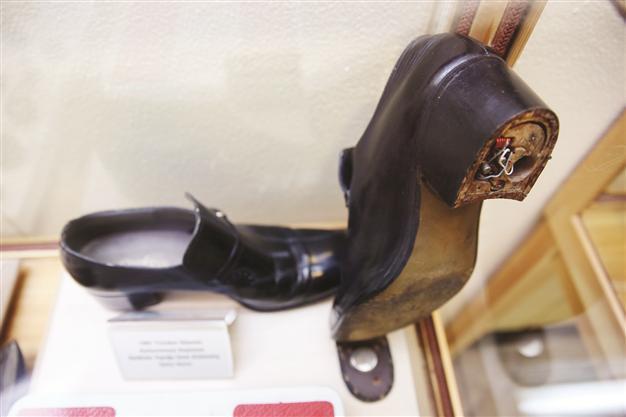Turkish intelligence’s ‘museum’ revealed
ANKARA - Hürriyet

A shoe wedge bug is among the many objects used by the Turkish intelligence organization between the Second World War and the end of Cold War. Hürriyet photo
Turkey’s National Intelligence Organization (MİT) has opened its museum’s doors for the first time in history, allowing the daily Hürriyet a unique look into the workings of the organization.The spying instruments used between the Second World War and the end of Cold War vary among nearly 150 equipment from a shoe wedge bug to a weighing machine or a soap, pen, plug fuse, tie, radio, watch that records voices.
The instruments are being evaluated as historical artifacts by the MİT. The MİT was established in 1965 to replace the National Security Service, which was found in 1926.
The fact that MİT owns a museum was leaked in the 85th anniversary of the organization’s establishment in Ankara by some journalists; however the matter did not become a hot issue at the time. The MİT’s response to Hürriyet’s demand to visit museum was positive.
The MİT staff does not term the site as a museum but the full complement of the equipment is enough to call it a museum.
Officials said the museum shoulders the responsibility of conveying the history of the MİT, showing “how great missions completed the MİT without enough resources.”
Spying equipment, which is allowed to be shared with the public, is currently on display behind glass partitions in the museum.
The material, classified under the “technical documentation” tag, includes: a voice recorder, video recorder and audio surveillance systems. A section only was parted for the bugs found in Turkey’s diplomatic mission buildings abroad in the Cold War era, 1967-1989.
The equipment, labeled as “top secret”, is being kept in locked rooms, the official said.
The official commented that only certain authorized personnel are permitted to view such material. The equipment was photographed for the first time in MİT’s history, but their stories were not shred with the daily Hürriyet.
















